Characterisation Facilities
General Instrument Laboratory
Location: B05
1. Time-correlated single-photon counting (TCSPC)
Time-resolved PL spectroscopy is measured using the DeltaFlex (Horiba) time-correlated single photon counting (TCSPC) system. It can provide insight into the competition processes between radiative and non-radiative processes. The timing electronics equipped within the DeltaFlex system offers accurate counting and allows for the measurement of lifetimes from tens of picosecond to 1 second, covering both fluorescence and phosphorescence lifetime measurements.
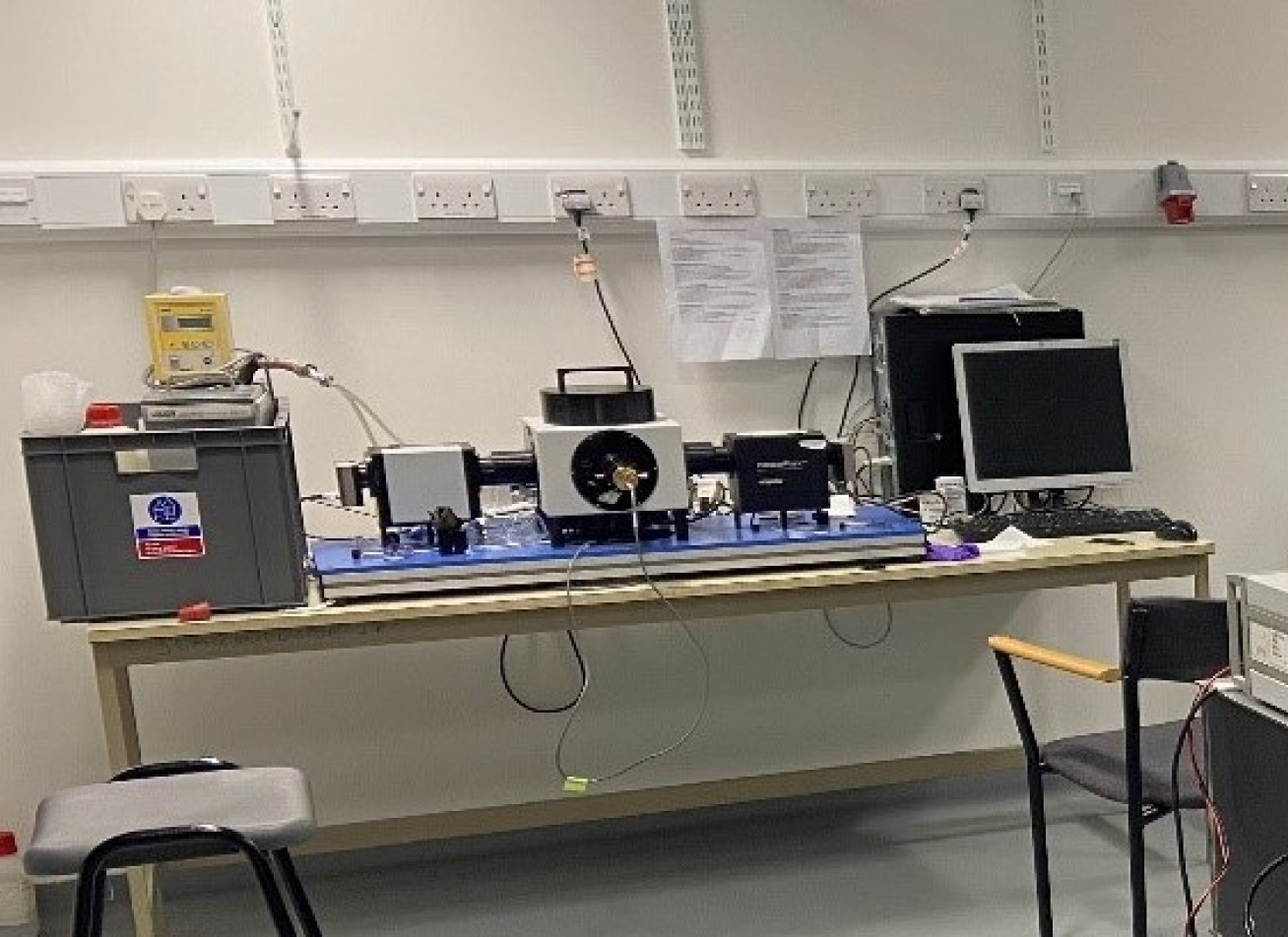
There is a wide range of excitation wavelengths available with laser diodes or SpectraLEDs covering the range between 280 nm to 635 nm. The emitted photons were detected with a photomultiplier tube (PPD-900) which allows the detection of photons between 300-900 nm.
2. UV-Vis Spectrometer (Cary 60) and Fluorescence spectrophotometer (Cary Eclipse)
The Agilent Cary 60 UV-Vis Spectrophotometer is efficient, accurate and flexible, and is designed to meet both current and future measurement needs. The proven, robust design of the Cary 60 comprises a double beam, Czerny-Turner monochromator, 190–1100 nm wavelength range, 1.5 nm fixed spectral bandwidth, full spectrum Xenon pulse lamp single source with exceptionally long life. Scan rates up to 24,000 nm/min, 80 data points/sec maximum measurement rate, room light immunity, central control by PC with Microsoft® Windows® operating system. Optional 21 CFR Part 11 capable software, and dedicated instrument validation software which includes pharmacopeia test suites.
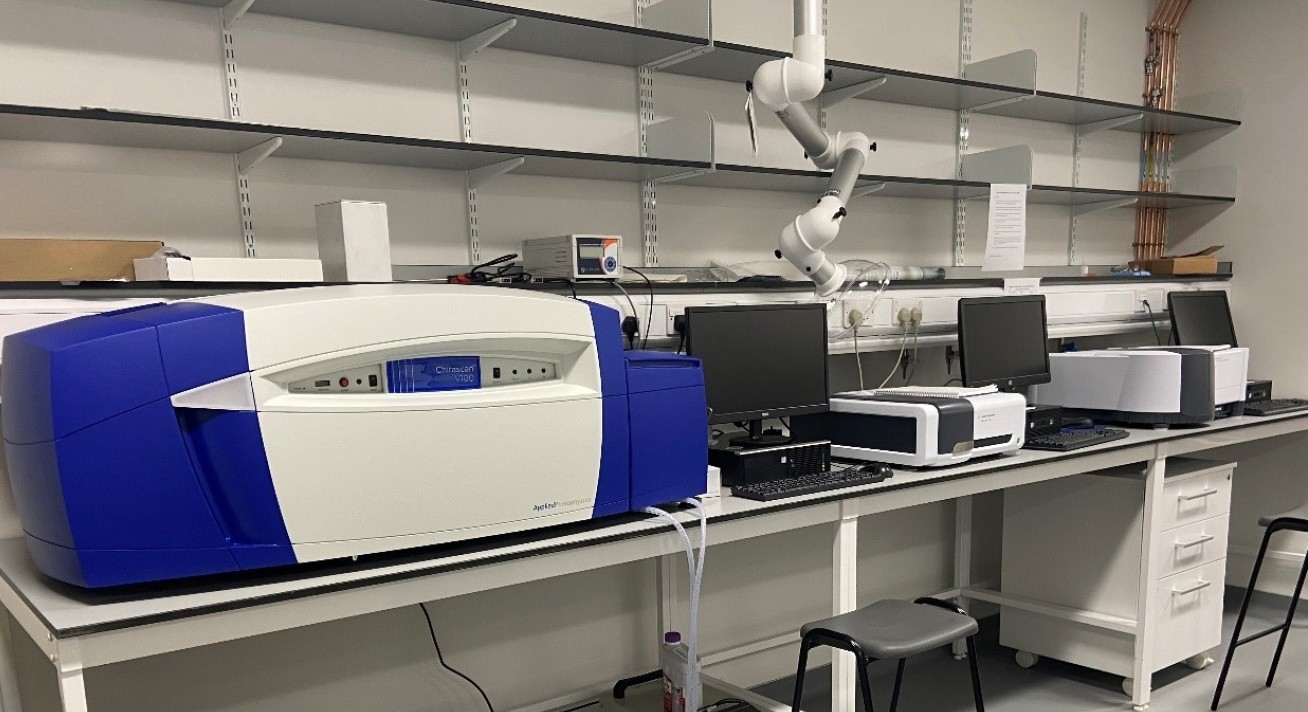
The Agilent Cary Eclipse can carry out fluorescence, phosphorescence, chemi/bio-luminescence, and time resolved phosphorescence measurements. It incorporates the unique Agilent xenon flash lamp to capture a data point every 12.5 ms and scans at 24,000 nm/min without peak shifts perfect for high throughput laboratories and fast kinetics applications.
Materials Preparation Laboratory
Location: B01
Incident Photon-to-current conversion efficiency ( IPCE) set up
Incident photon-to-current conversion efficiency measurements are conducted in a setup illustrated in below.
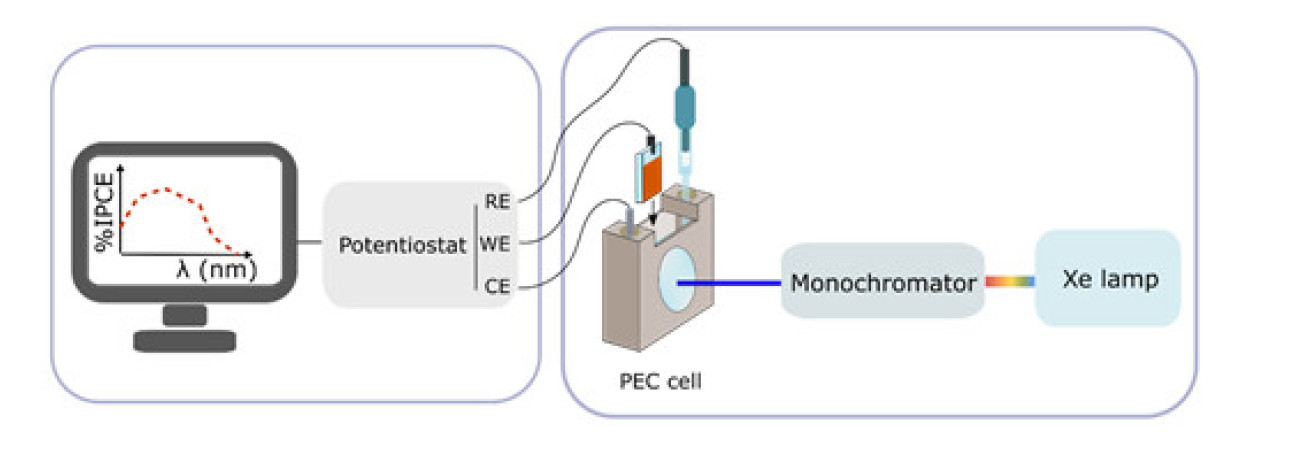
The Xe lamp is fitted with a monochromator (OBB-2001,Photon Technology International). The intensity of the monochromated light is measured using an optical power meter (PM 100, Thorlabs) equipped with a silicon photodiode (S120UV, Thorlabs).
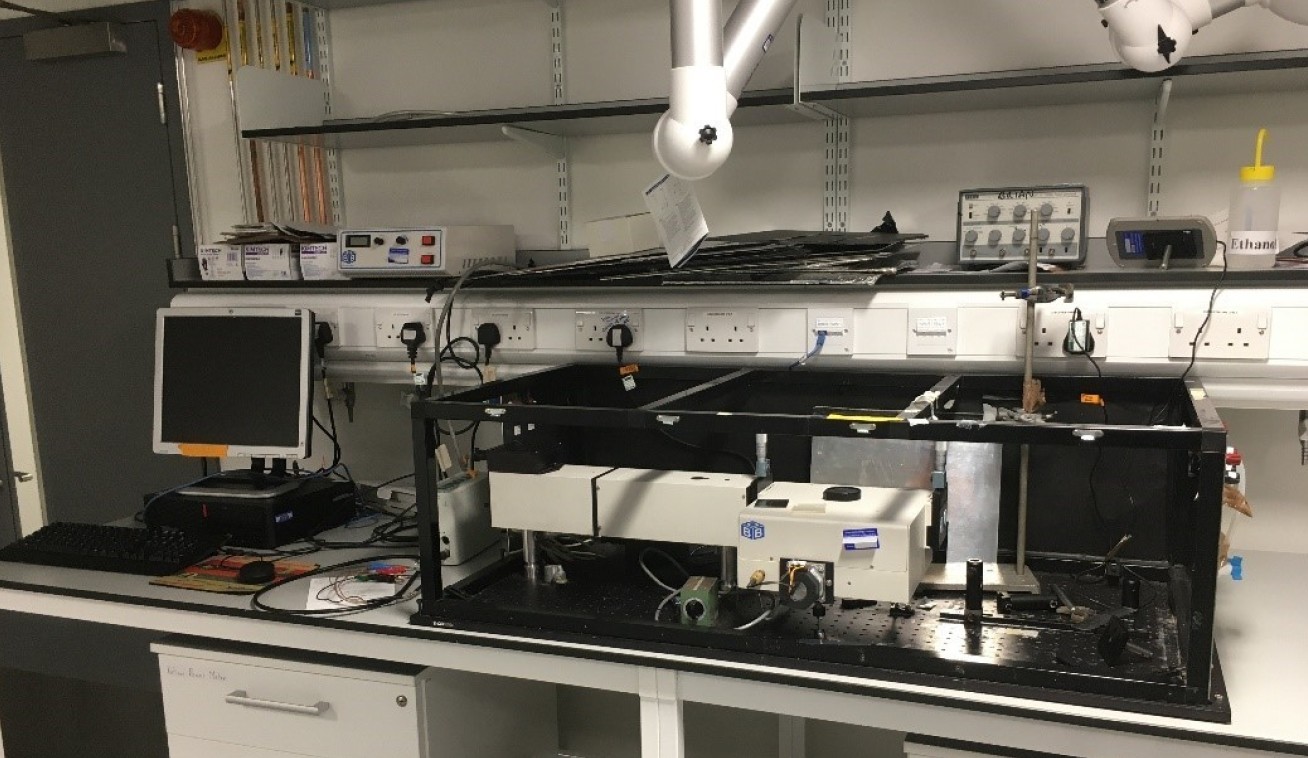
Material Electrochemistry Laboratory
Location: B33
1. Photoelectrochemical ( PCE) set up
The photoelectrochemical (PEC) measurements are usually conducted in a home-built three electrode cell. An Autolab potentiostat (PGSTAT 101, Metrohm) is used to apply the potential to the cell and the data are recorded with Nova software (Metrohm). Measurements such as linear-sweep voltammetry, cyclic voltammetry, chonoamperometry etc. are performed in a home-built photoelectrochemical set-up illustrated below.
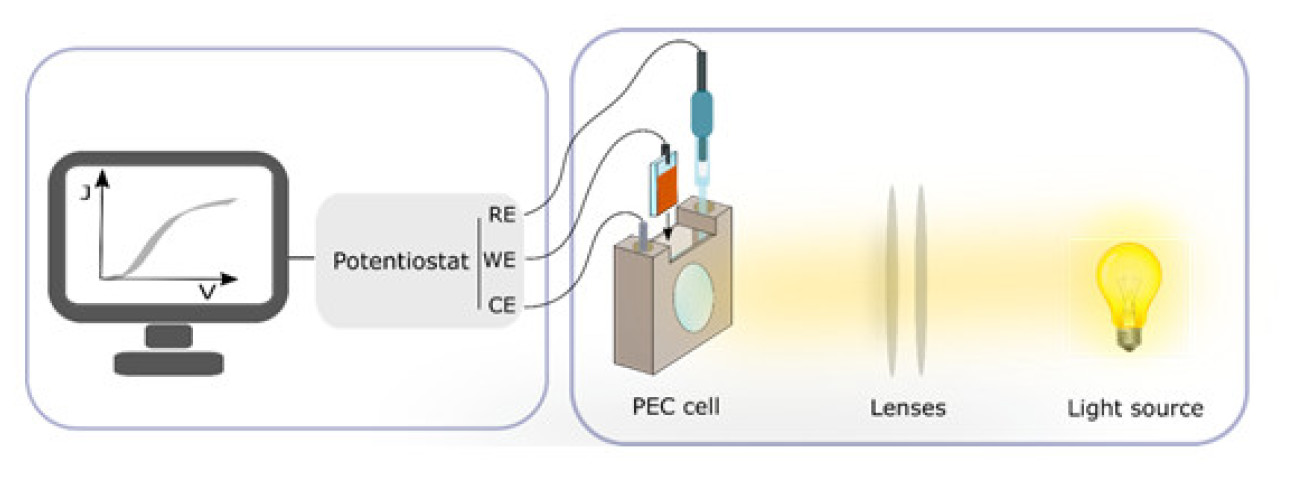
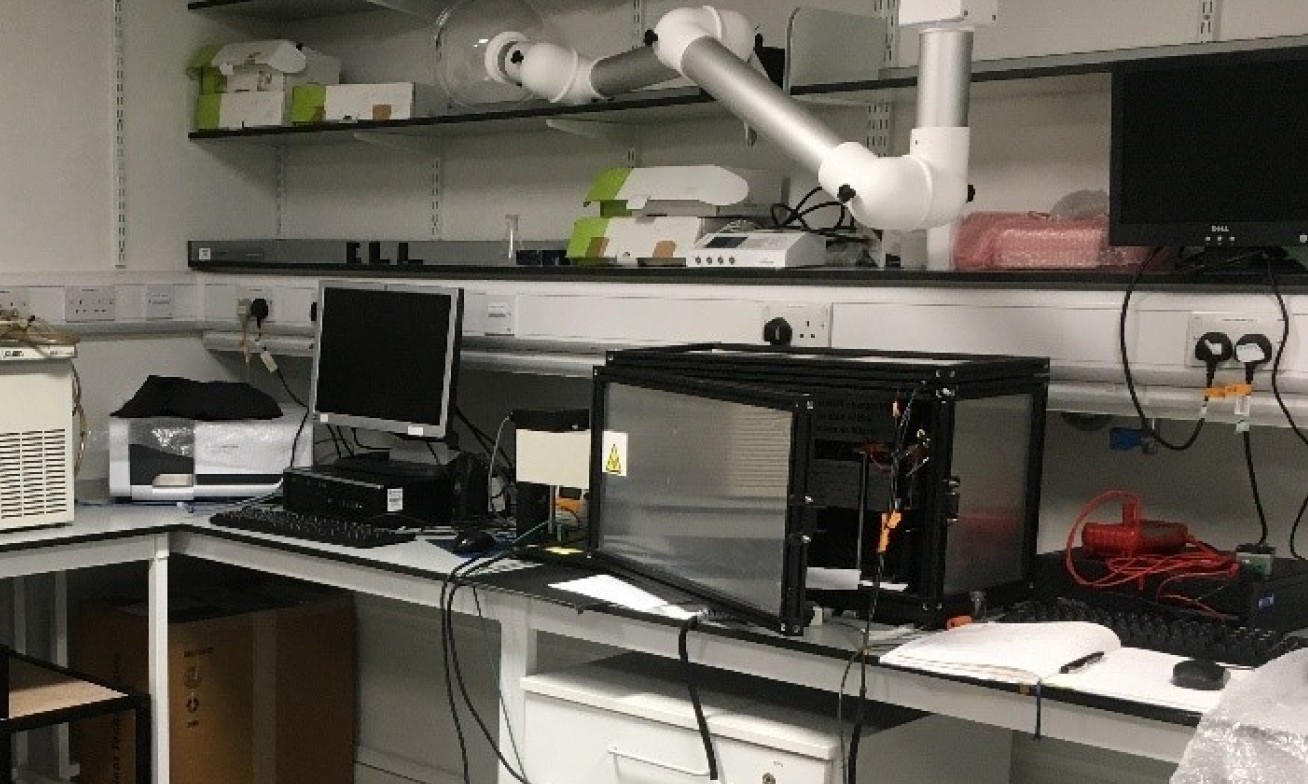
The set-up consists of a Xe-lamp light source, filters and lenses, a home-built three-electrode PEC cell coupled to a potentiostat. To obtain the same photon flux as AM 1.5G at wavelengths lower than 650 nm, the power output of the Xe-light source (75 W, Hammamatsu) is calibrated using a KG3 filter and a Si-photodiode. Integrating the solar AM 1.5G spectrum up to 650 nm, the Si-photodiode should produce a current of 7.2 mA cm-2, which is then used to adjust the position of the sample to correspond to 1 sun irradiation conditions.
2. UV-Vis and spectroelectrochemistry (SEC)
Spectroelectrochemistry (SEC) allows the determination of change in the optical density (ΔOD) of a material resulting from applied potential, and thus oxidation or reduction of sample under steady-state conditions. The data are measured as the difference in the optical absorption spectra as a function of applied potential, with respect to the spectrum at a reference potential.
Photovoltaic characterisation laboratory
Location: LG08B, Cleanroom
The characterization laboratory is used to measure the electrical performance of the solar cells fabricated into the cleanroom Lab using wide varieties of Small organic molecule, polymer and perovskite materials under illumination of 1 sun provided by Xenon arc lamps. This facility consists of system of Lot-Orial solarsimulator classed ABB and Newport solar simulator classed AAB, used for JV measurement of the devices under 1 sun exposure, that is calibrated using a standard Si-photodiode. Keilthley 2400 is used to measure the generated photocurrent in the device at different voltages. As the light sources are xenon based and a spectral mismatch correction factor is applied to every measurement so that the results are corrected for standard reporting conditions.
Device performance measurement system
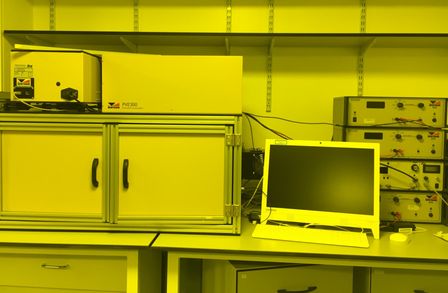
Benthem PVE300 EQE system
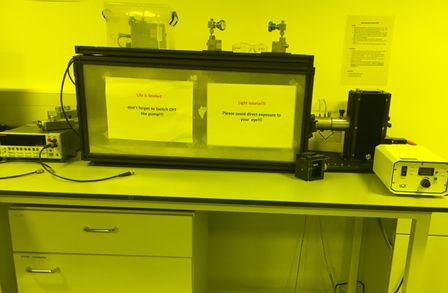
Lot-Oriel Solar simulator
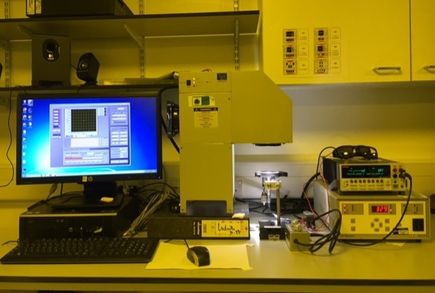
Newport Solar Simulator
The PVE300 EQE system consists of an optimised tuneable light source based on xenon-quartz tungsten halogen dual source and single monochromator which operates in range of 300-1100nm that is compatible for most of small molecule, polymer and perovskite solar cells fabricated in the lab. The measurement is performed by shining a monochromatic probe beam onto the sample and recording the photocurrent generated as a function of wavelength. The beam power is first characterised, using a silicon photo detector DH-Si of active area 10mmx10mm of known responsivity (AW-1). Subsequent measurement of the photocurrent generated by the device under test as a function of wavelength allows for the determination of spectral responsivity and displaced on the Bentham software which will allow to us calculate the Jsc, the current density at short circuit condition under illumination of 1 Sun. In addition to normal operation, there is an opportunity to apply different bias light using additional dual light source of quartz halogen and Xenon lamp to device in order to minimise any nonlinearity on photo current measurement at low light intensities.


